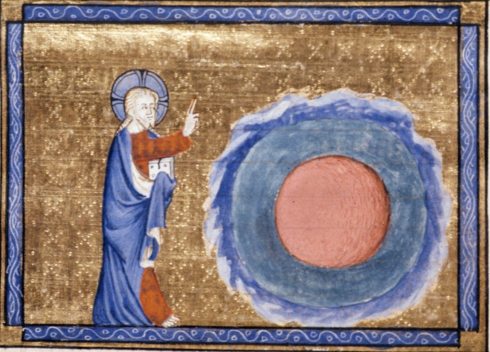previous
How does basic knowledge get lost?
starting exploration
Questions and thought related to “Misguided”
- Attached to the essay "Misguided"
Why did the flat earth myth take hold?
Posted December 9, 2013 5:47 pmScholars are clear that the earth’s true shape was never lost. It is well established that educated people, from at least the 14th century on, recognized sphericity. Since the curvature of the planet is visible during an eclipse and during sea travel, it is not surprising.
What is surprising, is that the myth was routinely taught in American schools (including mine) until the early 1960’s and persisted even into the 80’s, in reference to the arguments against Columbus’s voyage. In fact, the debate concerning the shortest route to Asia had to do with a disagreement about the circumference of the globe and the impossibility of outfitting a small ship with sufficient provisions to last the journey. Columbus was, in fact, wrong in his argument for a smaller earth, and he and his crew were saved–and able to return home—only by the existence of the Caribbean Islands and American landmass of which he had been ignorant.
 So the question, in fact, is how the myth got established and why it stuck. It seems that the story is a relatively modern one that was intentionally promulgated in the 19th century. A very readable explanation can be found on Nancy Marie Brown’s blog which includes the 14th century biblical illustration of the creation of the world with a nicely shaded, spherical globe. She puts most of the blame on Petrarch, the 14th century Italian writer, and on our own 19th century Washington Irving.
So the question, in fact, is how the myth got established and why it stuck. It seems that the story is a relatively modern one that was intentionally promulgated in the 19th century. A very readable explanation can be found on Nancy Marie Brown’s blog which includes the 14th century biblical illustration of the creation of the world with a nicely shaded, spherical globe. She puts most of the blame on Petrarch, the 14th century Italian writer, and on our own 19th century Washington Irving.
According to her, Petrarch coined the term “Dark Ages” to signify the period between the Ancient era and his own “Modern” era. In between was the dark period after Rome became Christian in the 4th century, a period of 1000 years. Petrarch and his cohorts prided themselves on bringing back all the ancient texts, which they liked to see as having been ignored for the previous ten centuries, despite their having been copied and preserved in European monasteries during this period. Apparently Petrarch has a political motive as well, since there was a movement among the Italian cities to get free of the Holy Roman Empire; denying the contributions of the Church suited their purpose.
Washington Irving, riding a wave of celebrity from the success of Rip Van Winkle and The Legend of Sleepy Hollow, traveled to Spain where he obtained original documents about Columbus that he sought to enliven with his own invention of the confrontation between an enlightened Columbus and the benighted Salamanca churchmen who thought the world was flat. The Medieval historian, Jeffry Russel, argues that the false story stuck because it suited our national pride to think that “before the dawn of America broke, the world had been in darkness.”
In general, the flat earth myth has been used by Protestants campaigning against Catholic teaching and to champion science over religion, when the two were seen to be at odds. So Russel argues in Inventing the Flat Earth: Columbus and Modern Historians. The flat earth myth gained popularity in the 19th century, thanks to a series of inaccurate histories, including one by the first president of Cornel University, Andrew Dickson White. White, arguing against any religious ties for the university and a fierce advocate of Darwinism, saw the opponents of evolution as part of a long line of anti-science religionists who fought progress in education throughout the Christian Era.
Russell pinpoints prejudice and presentism–the belief in the superiority of present views over those of the past–as behind the hold that the flat-earth myth was able to exercise on the modern imagination. We Americans, even today, cotton to the image of Columbus as a romantic, creative thinker, fighting the ignorance and narrow-mindedness of his times to trust in his own better sense and to go where no man had ever gone before. The story is so perfect for the movies, it’s amazing it hasn’t made it to the cineplex.
topics: culture
share
 site feed
site feed


